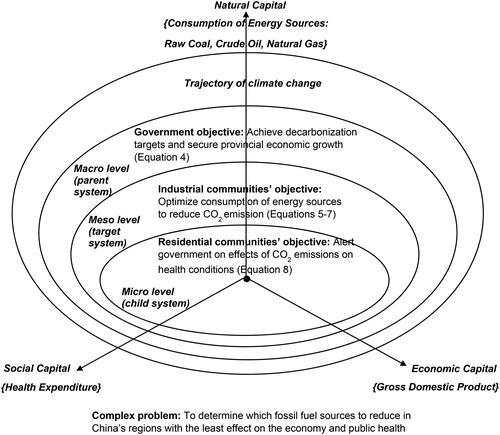Figures & data
Table 1. Main measures in China’s National Working Guidance for carbon dioxide peaking and carbon neutrality.
Figure 1. SSoS framework to address China’s decarbonisation problem.
(Note: The equations for the econometric analysis for each level are presented in the Section 3.3).

Table 2. Provinces/cities in the Eastern Region, Central Region, and Western Region of China.
Table 3. Descriptive statistics of the variables for 30 provinces in China, 2009–2019.
Table 4. Econometric analysis results.
